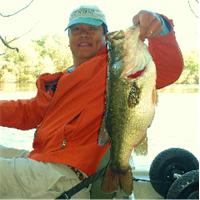 |
|
| View previous topic :: View next topic |
| Author |
Message |
BlueChip
Joined: 29 Jun 2011
Posts: 177
Location: New Haven/Madison/Essex
|
 Posted: Thu Jan 16, 2014 12:07 pm Post subject: IMEP Special Notice #1 -Black Hall River Fish Kill- Jan.2014 Posted: Thu Jan 16, 2014 12:07 pm Post subject: IMEP Special Notice #1 -Black Hall River Fish Kill- Jan.2014 |
 |
|
The Sound School Inter-District Marine Education Program Newsletter
Habitat Information for Fishers and Fishery Area managers
Understanding Science through History
Timothy Visel
The Sound School
January 2014
IMEP Special Notice #1
The Black Hall River Fish Kill
CT Fish Talk™ River Reports and Salt Water Reports
In the last week or so I have received many messages and phone calls about the striped bass fish kill in the Black Hall River, Old Lyme, Connecticut. I appreciate obtaining background information as it is part of my habitat history research; it is very relevant to my current research on sulfide toxicity. The Black Hall River fish kill resembles in old texts the “black water deaths” in cold weather following a very hot period here called The Great Heat 1880-1920. During hot periods organic matter builds up on hard bottoms – it rots and turns black. On land farmers and gardeners often called it “black butter” (Campbell 1975) an undesirable anaerobic compost but in the marine environment many fishers will recognize its common name as “black mayonnaise” or its more scientific term Sapropel.
Sapropel can cause huge levels of sulfides which are very toxic to fish, especially in cold water. Rivers and salt ponds are more susceptible after long hot periods as Sapropel can build up to several feet deep in them containing huge amounts of sulfide. In fact many fishers have smelled the sulfur match stick odor themselves when disturbing these deposits or saw bubbles rising from it in winter.
In winter time hydrogen sulfide levels can actually increase – especially when the compost is acidic and becomes more toxic. This happens in lakes and ponds also as part of the fall overturn, its research term is “acidic volatile sulfide” but fishers called it as they saw it “Black Water Deaths.” Sometimes blue crabbers will scoop some of it up while crabbing and smell the rotten egg odor that is the hydrogen sulfide.
Not too much is known about sulfide toxicity – Sapropel (Black mayonnaise) has not been a research area for nearly a century. But Sapropel is deadly and impacts are seen by accident in the marina industry. Occasionally a line or mooring chain will exhibit growths algae, mussels and other organisms but when hauled the chain or rope suddenly turns black and is absent of life. That is what Cape Cod fishers a century ago called the “dead line” which we know today as the sulfide toxic stratified layer – below which most life cannot exist. Some of the signs of sulfide poisoning are an increase of Sapropel thickness and the smell of sulfur when these deposits are disturbed.
Most of the Sapropel deposits are terrestrial leaf deposits especially oak leaves which are naturally acidic and when rotting in low oxygen have sulfur compounds. One of the features of black water deaths is that they occurred under ice and relatively unseen until spring described as “winter kill” often of blue crabs. Most fish kills on salt ponds were observed in spring as the ice broke up.
Some of the first hydrogen sulfide toxicology studies were connected to ponds and shallow lakes, Colby and Smith (1967) found toxic sulfide concentrators within 20 millimeters of bottom sludge beds and levels of just .02 mg litter would kill Walleye eggs and at 47 micrograms per liter would kill all Northern Pike eggs.
The toxic impacts increased when the sludge (Sapropel) is acidic – “In Winter when the pH is neutral or below or when dissolved oxygen levels are low but not lethal to fishing the hazard from sulfides is exacerbated.” Any currents mixing bottom sulfide rich Sapropel into the water column could therefore increase toxic impacts. The black water deaths did happen in shallow ponds that iced over and abated when dredged or the dam breached to let all the “rot out.” Sapropel increases is now linked to the huge increase in Winter Flounder fin rot in the 1980s.
The ice historically does seem to have a role in rivers clearing themselves of Sapropel. George McNeil formerly of Clinton recalled to me that during winters with heavy ice, when it broke free, the Hammonasset River oyster beds were scrubbed clean exposing many areas of black buried shells called “stools” in the oyster literature. The flows under the ice increase as the tides dropped and had washed all the organic matter out. In periods in which ice did not form oyster beds were frequently suffocated by thick Sapropel (black mayonnaise) deposits. (Comments made to me by George McNeil, Clinton, CT in the 1980s).
What I will do is over the weekend-- I will review my reports and try to put together a short fact sheet about this but from historic records and fisher observations several factors are involved – Sapropel, ice, shallow depths and currents. It may be one of those rare sulfide events but need more site specific information.
For those of you interested in Sapropel we will make available a report titled “Sapropel and Climate Change Fisheries Habitat Degraded by Putrefied Organic Debris in High Heat” January 2013, 29 pages, it’s still a work in progress but describes the formation of Sapropel over habitat successional periods. Sue Weber will send it to you, her email is susan.weber@new-haven.k12.ct.us
It should be available by 3pm today. It is as all IMEP materials are– no charge.
Again thanks for the many habitat questions and calls this week but this type of event is historic and related to habitat succession. More to come.
I also want to thank the web moderators at CT Fish Talk™ for posting these IMEP reports for fishers.
Tim Visel
The Sound School
The HIFFM IMEP Newsletter is possible by an Inter-District Cooperative Grant (Public Act 94 -1) and regional marine education bulletins can be obtained or accessed on the Adult Education and Outreach directory by accessing the Sound School website:
www.soundschool.com/publications%201.html.
For information about The Sound School website, publications, and / or alumni contacts, please contact Taylor Samuels at taylor.samuels@new-haven.k12.ct.us
The Sound School is a Regional High School Agriculture Science and Technology Center enrolling students from 23 participating Connecticut communities. |
|
| Back to top |
|
|
|
PECo

Joined: 06 Oct 2009
Posts: 5203
Location: Avon, CT
|
 Posted: Thu Jan 16, 2014 2:10 pm Post subject: Posted: Thu Jan 16, 2014 2:10 pm Post subject: |
 |
|
Thank you for posting this, Tim. Would you please follow up as more information becomes available to you? Thanks, again.
_________________
Don't forget to wear sunscreen and don't litter! |
|
| Back to top |
|
|
|
You cannot post new topics in this forum
You cannot reply to topics in this forum
You cannot edit your posts in this forum
You cannot delete your posts in this forum
You cannot vote in polls in this forum
|
|





